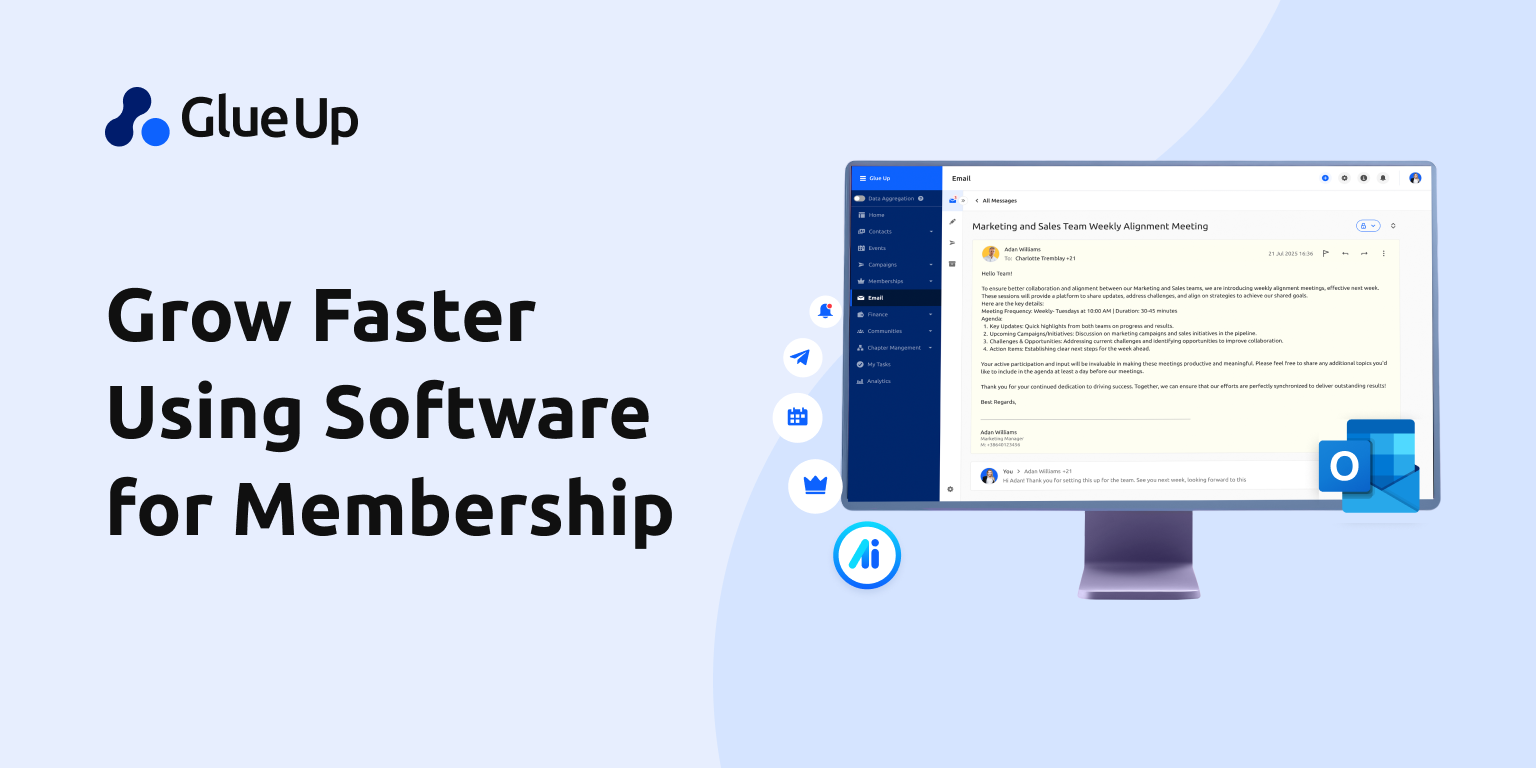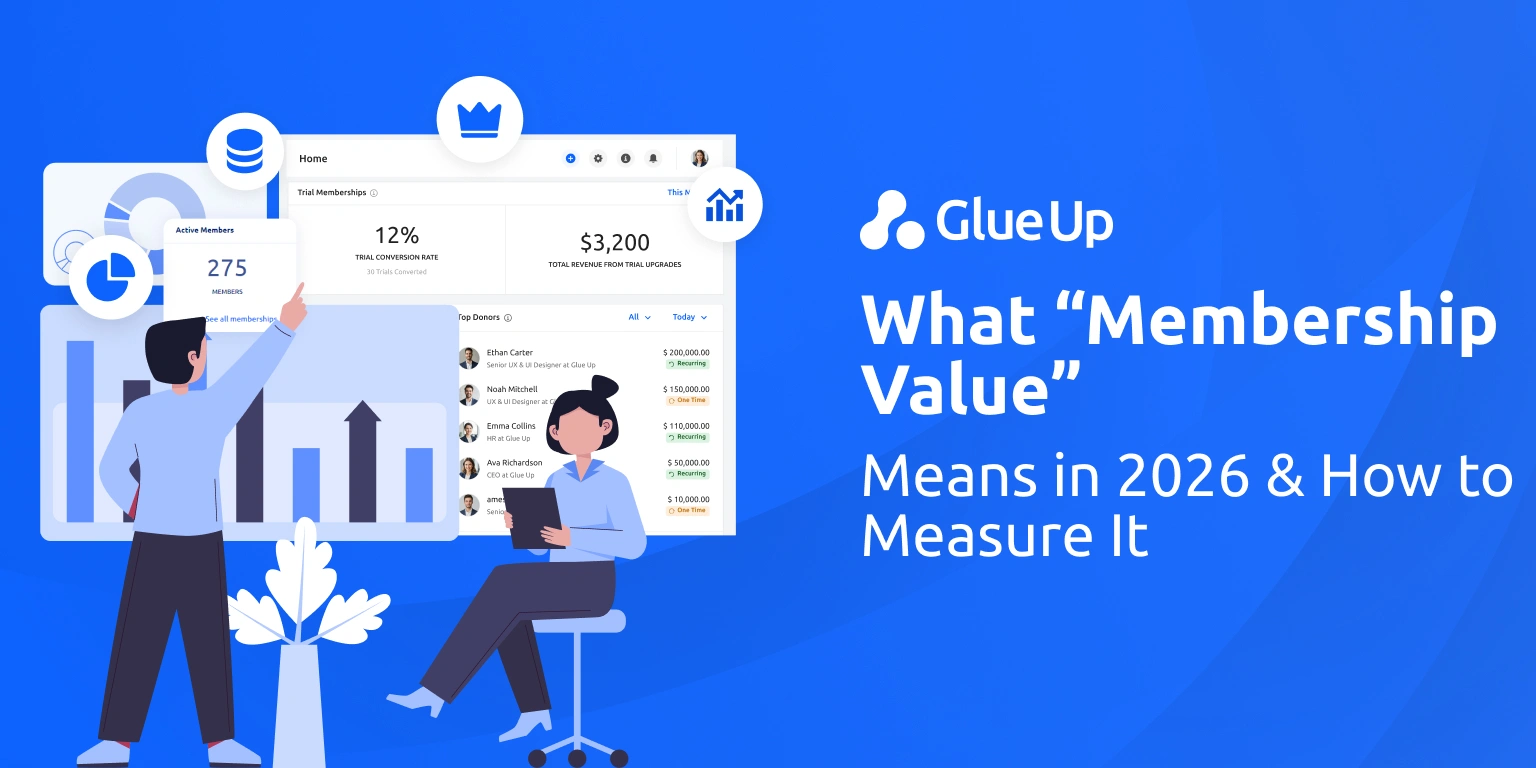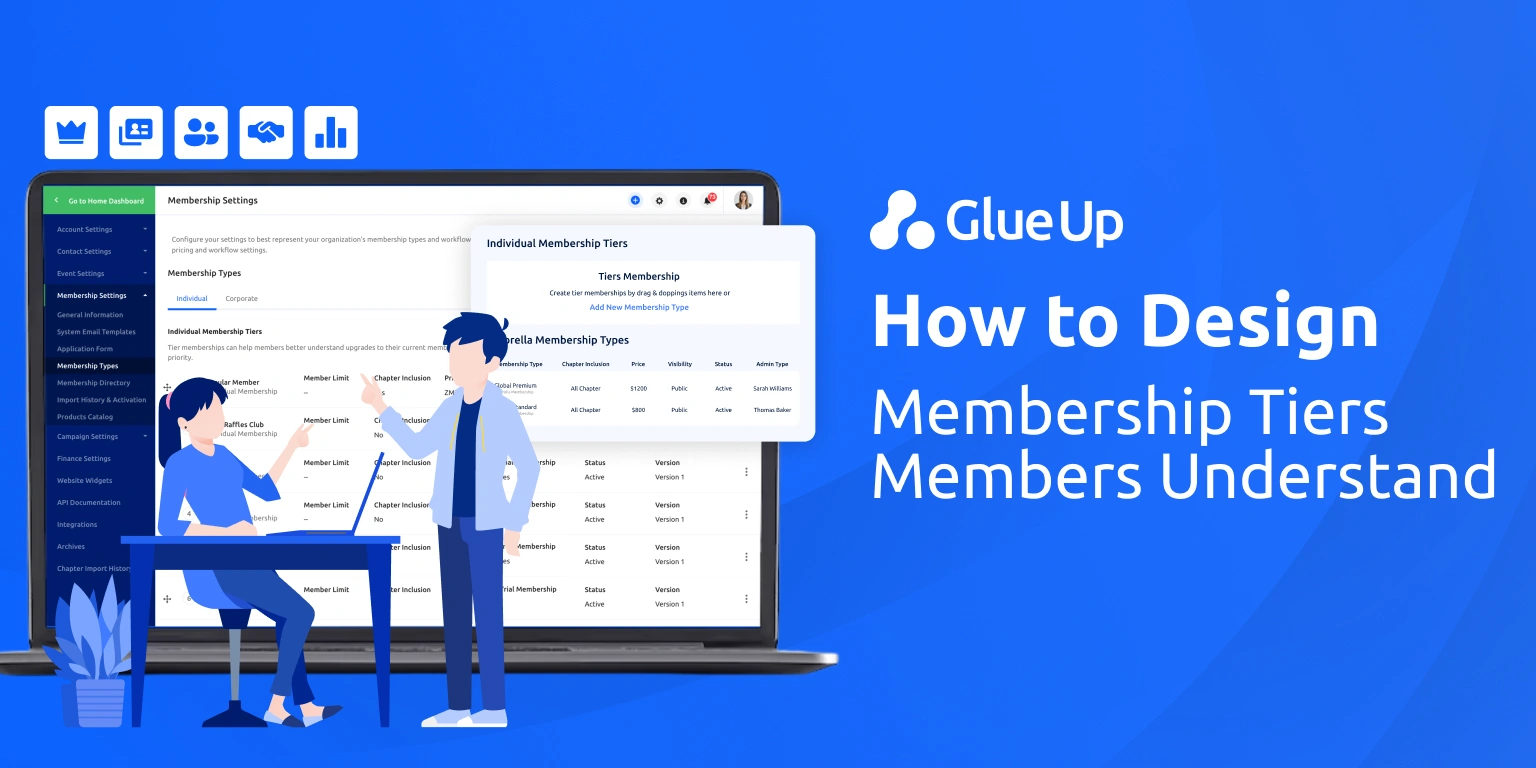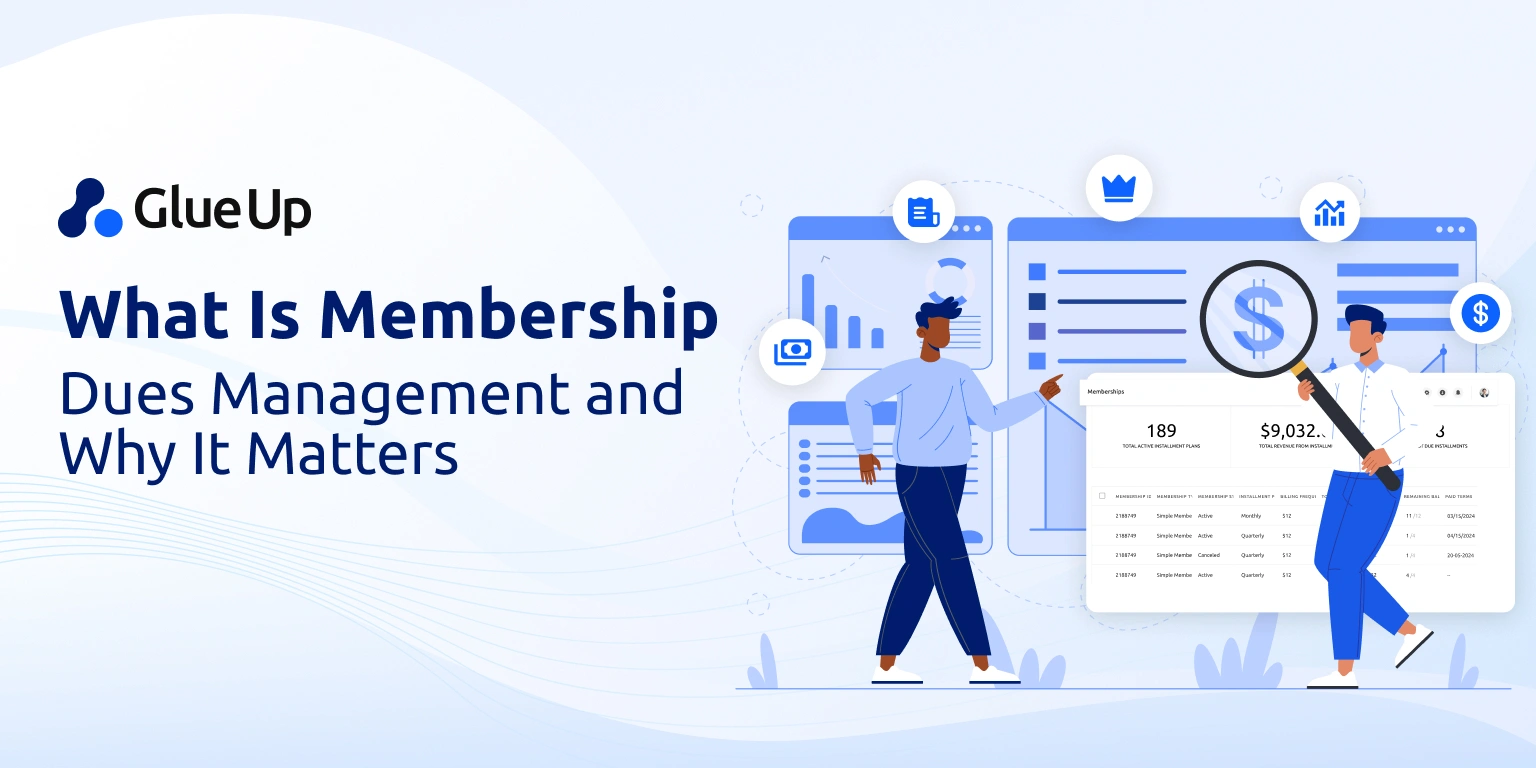
Software for membership is a tech upgrade and the growth engine most organizations didn’t realize they needed. Growth doesn’t stall in dramatic fashion. It slips through the cracks—when a renewal reminder gets ignored, when event RSVPs don’t match your outreach, or when staff spend hours tracking payments manually instead of doing the work that moves the mission forward.
The organizations that grow work harder and build smarter systems. And the most overlooked system of all is one that connects operations to engagement in real time.
This is where the right software for membership makes all the difference. It bridges the gap between actions and outcomes—between someone signing up for a webinar and becoming a high-value member. Between payments, check-ins, surveys, and renewals. It replaces reactive workflows with predictive ones.
What follows is a detailed breakdown of how modern membership software—when built with growth in mind—works. With practical strategies, real-world examples, and a few uncomfortable truths that many associations quietly ignore.
The Real Reasons Growth Stalls
Forget the clichés about digital transformation. If your membership numbers are flat—or falling—there’s usually a more specific operational pattern underneath.
1. Your Data Isn’t Connected
Most associations still run siloed systems: spreadsheets for dues, Eventbrite for RSVPs, Mailchimp for newsletters, and Slack for whatever’s urgent. That setup fragments your understanding of members and kills your ability to grow intentionally.
You can’t tell which event types drive the highest retention.
You don’t know which members are most at risk.
You have no way to personalize outreach based on real behavior.
Growth becomes guesswork. And guesswork is expensive.
2. Manual Work Becomes a Hidden Tax
Processing paper checks. Manually updating CRM. Exporting attendee lists. These may not seem like growth blockers, but they add up.
According to McKinsey, the average employee spends 1.8 hours a day just searching for information. That’s 9.3 hours a week. And it’s worse in orgs that rely on unlinked tools.
Time lost—it’s redirected away from strategy, member engagement, and innovation.
3. Engagement is Reactive
Most orgs treat engagement like a fire drill. There’s no proactive model to keep members involved between events or dues cycles. Software should engineer engagement, and record it after the fact.
What Great Software for Membership Does
Not all membership software is built alike. But when designed around growth, it should do these five things exceptionally well:
1. Centralize and Sync Your Data (No More Silos)
A single source of truth means everything: payments, event attendance, email engagement, membership tiers, and renewal status—linked together.
Why it matters:
You can track full engagement lifecycles.
Your finance team sees revenue in real time.
Marketing can run targeted, behavior-based campaigns.
An Asia-based chamber of commerce using Glue Up’s platform reduced manual reconciliation time by 73% and saw a 48% boost in renewals within six months—because their CRM and payment system talked to each other.
2. Automate Repetitive Tasks (Without Sacrificing Control)
You should never manually send renewal notices. Or following up on bounced payments. Or updating member statuses after an event.
Software should handle these flows:
New member joins → status set to “active” → welcome sequence sent
Payment overdue → auto-reminder + grace period alert → team notified
Event RSVP → check-in → tag added to CRM → post-event survey triggered
That’s growth on autopilot.
3. Create Experiences That Feel Personal—Even at Scale
The best software uses behavior to drive communication. It track interactions and interprets them.
For example:
A member attends three leadership events in a row → tagged as “high potential” → invited to exclusive roundtable
Another stop opening emails for 90 days → nudged with a custom re-engagement offer
The more personalized you are, the more you retain. And retention is growth’s secret weapon.
4. Forecast Revenue and Member Health
Good software helps you stop reacting and start planning. Think dashboards that show:
Expected renewals this quarter
Risk scores for member churn
Conversion rates from trial to paid tiers
With this, leadership can shift from asking, “What happened last month?” to “What’s coming next?”
5. Integrate Payments, Communication, and Events
Growth happens when your operations coexist and connect.
That means:
Payment systems trigger automated receipts and finance updates
Event registrations update CRM fields in real time
Email campaigns pull from the latest member activity, not stale lists
It’s not about stacking tools. It’s about building a loop.
What Glue Up Does Differently—And Why It Actually Works
Let’s stop pretending that software alone fixes everything.
Member-based organizations aren’t short on tools. They’re short on alignment. The disconnect between finance, membership, marketing, and leadership isn’t a product issue—it’s an operating issue. Glue Up notice that. It was built around it.
This isn’t a typical “all-in-one” system where feature lists grow longer, and user adoption shrinks faster. Glue Up operates like a mirror for how associations actually work. And once you understand that the real advantage shows up.
Real-Time Syncing That Reflects How People Work
Here’s what most orgs deal with:
A member joins and pays online
But the CRM isn’t updated until someone downloads a CSV
Finance doesn’t see the transaction until month-end reconciliation
Nobody sends a welcome email because nobody knows it happened
That’s not disorganization. That’s disconnection by design.
Glue Up flips this on its head with a 30-second loop:
Payment received →
CRM status flips to “active” →
Welcome email is sent →
Renewal date + tag logged →
Finance sees it in their dashboard →
Engagement history updated automatically
No download folders. No “Did you update the spreadsheet?” Slacks. No scrambling before board reports.
This is what an operational CRM actually looks like.
It’s Organizational Clarity.
Most platforms sell “automations.” Glue Up doesn’t stop there. It builds operational logic into how the system thinks.
It knows:
Which member types get what workflows (individual, corporate, multi-location)
When to flag missing payments or stalled applications
How to score engagement behavior for renewal risk
Where to send check-in data from an event without needing an import
One Asia-based chamber used to spend three days a month reconciling dues. Now it takes 27 minutes—and their renewal rate jumped 48% in six months.
Not because the platform is fast. But because the work finally made sense.
Syncing Beyond Membership: Events, Finances, Communications, Communities
Glue Up touch membership—it closes the loop across every interaction:
Finance: Revenue tracking, tiered billing, invoice generation, and forecasting in one place. No more chasing down spreadsheets from accounting.
Events: Attendance data updates member profiles. Missed the last three events? The system flags them for re-engagement.
Marketing: Emails are sent based on real actions—like attending a session or paying late and random segments.
Community: Members who participate get auto tagged. VIPs surface naturally. You stop guessing who matters.
It’s not “all-in-one.” It’s all connected.
The Insight Most Orgs Miss: Your Tech Reflects Your Structure
Glue Up isn’t for teams that want shiny dashboards. It’s for organizations that understand their internal misalignment is the real productivity killer.
What this software does differently is acknowledge that:
Admins are tired of double entry
Finance needs real-time visibility
Marketing needs better triggers
Members expect to not feel like a stranger after paying $300
Glue Up isn’t perfect, but it prioritizes the flow of work over just stacking features. That’s rare.
Mobile-First, Check-in Ready, and Admin-Approved
It’s 2025. Your admin shouldn’t need a laptop and three tabs to mark someone as “attended.”
Glue Up’s mobile tools let you:
Check in attendees on-site in seconds
Update member data on the fly
Approve renewals, send receipts, and respond to questions
View workflow stages without calling HQ
The result: leaner teams operate like larger ones.
One user described it as “finally being able to breathe again at events.” That’s not hype. That’s a broken process finally getting out of the way.
The New Rules of Membership Growth
Software is about automation or convenience. It changes how you think about growth entirely.
Here’s what the new growth playbook looks like:
1. Members Are Lifetime Relationships
That means your tools need to reflect behavior across months and clicks. Software becomes your relationship memory.
2. Revenue Is Engagement
The orgs seeing 20%+ year-over-year growth are monetizing more than renewals. They sell sponsorships based on member engagement scores, host premium workshops, and offer tiered experiences.
Your software should help identify and activate those revenue streams.
3. Manual Processes Are Expensive
Every time a staffer spends an hour exporting data or chasing a check, that’s the cost. Not just in time, but in morale and missed opportunities. Automation isn’t a luxury—it’s a multiplier.
Common Traps to Avoid
Even the best software can fall flat if you approach it wrong. Here are the three biggest traps to watch out for:
1. Treating Software Like an IT Decision
If your leadership views it as “just another tool,” you’ll underinvest in onboarding, training, and strategic implementation. Growth software is an operational decision, not a tech one.
2. Buying Based on Features
Feature lists can be misleading. What matters is how those features connect and whether they support your specific workflows.
Always ask:
How does this tool handle renewals?
What does a member’s journey look like here?
How customizable are analytics?
3. Implementing Without Internal Alignment
Even the best tool will stall if your team isn’t trained or bought in. Build SOPs. Appoint champions. Start with one high-impact use case. Then expand.
What Fast-Growing Orgs Do Differently
Across hundreds of organizations that switched to all-in-one software for membership, we see a common pattern in those that scale fastest:
They reduce the number of tools they use by 60-70%.
They build out onboarding flows that run without manual intervention.
They track behavior and contact info.
They use data to make engagement decisions weekly—not quarterly.
And they don’t treat growth as a campaign. They treat it as an infrastructure problem.
Because when your infrastructure is built right, growth is the natural byproduct.
So, What’s Next?
If you’re still managing members in a spreadsheet, here’s the reality:
You’re slowing growth and setting your team up for burnout.
Modern software for membership isn’t about bells and whistles. It’s about finally having a system that sees the full picture, acts on signals in real time, and grows as fast as your vision demands.
The next 12 months don’t have to look like the last 12.
Start with how your members interact. Map how that should trigger action. Then pick the tool that makes that flow automatic.
Because growth isn’t a mystery.
It’s a system. And it’s time to build one that works.
The Growth You’re Chasing Is Operational
If you remember nothing else, remember this:
Growth doesn’t come from more effort—it comes from better design.
The right software for membership gives you that design: efficient, repeatable, smart.
Whether you’re a chamber trying to reclaim revenue post-COVID, or an association trying to expand your reach into Gen Z professionals, your growth plan doesn’t start with marketing.
It starts with your system.



